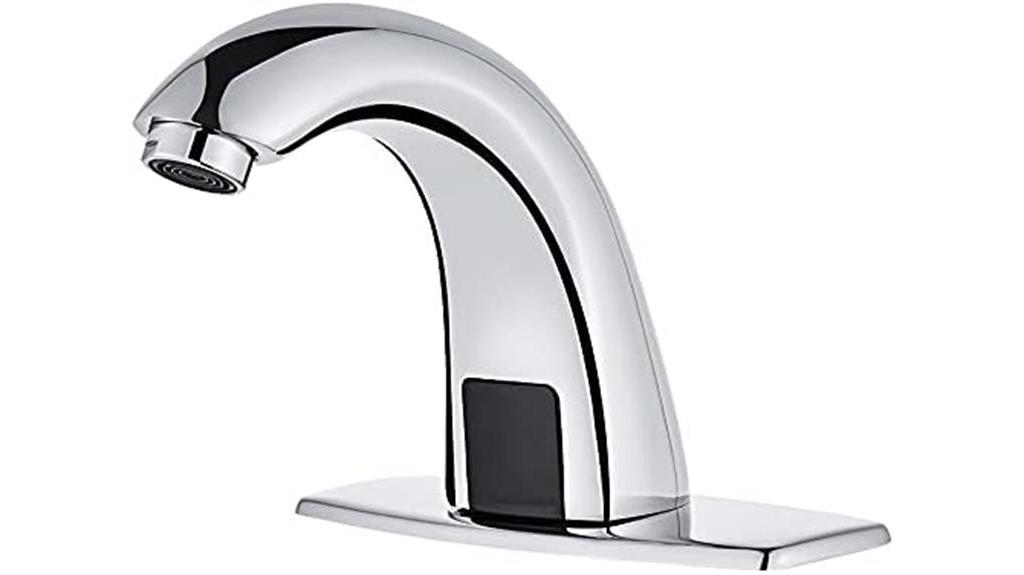Did you know that the type of toilet tank you choose can greatly impact your water usage and overall bathroom experience?
In this article, I will discuss the three main types of toilet tanks commonly found in American homes: gravity tanks, dual flush tanks, and pressure-assisted tanks. Each tank has its own advantages and considerations, and understanding the differences can help you make an informed decision.
So, let’s dive in and explore the world of toilet tank types!
Key Takeaways
- Gravity tanks are the most commonly used and easily replaceable type of toilet tank.
- Dual flush tanks allow for water conservation by offering different flush options for solid and liquid waste.
- Pressure-assisted tanks are commonly found in public spaces and may be more challenging to find tank-only options for.
- When looking for a replacement tank, it is important to know the make and model of the current tank and to measure the dimensions of the tank and its components.
Advantages of Gravity Tanks
I really like gravity tanks because they are easy to find replacement parts for and I can usually find a similar model from the same brand for tank replacement.
Gravity tanks have several advantages when it comes to repairing and replacing them. Firstly, replacement parts for gravity toilets are readily available. Whether it’s the fill valve, flush valve, or any other component, finding the right part is usually not a problem.
Secondly, the likelihood of finding a similar model from the same brand for tank replacement is higher with gravity tanks. This means that the new tank will fit seamlessly into the existing plumbing system, eliminating the need for costly modifications.
Overall, the availability and ease of finding replacement parts make gravity tanks a practical choice for those who value convenience and efficiency.
Benefits of Dual Flush Tanks
One advantage of dual flush tanks is their ability to conserve water by offering different options for waste disposal.
With a dual flush tank, users have the choice to use a lower water volume for liquid waste and a higher water volume for solid waste. This flexibility not only saves water but also contributes to cost effectiveness in the long run.
By using less water for liquid waste, households can reduce their water bills and conserve a precious natural resource.
Additionally, the environmental impact of dual flush tanks is significant. By conserving water, these tanks help reduce the strain on water sources and decrease the energy required to treat and distribute water.
This makes dual flush tanks an eco-friendly choice for both residential and commercial settings.
Pros and Cons of Pressure-Assisted Tanks
The advantages and disadvantages of pressure-assisted tanks are worth considering when choosing a toilet system for your home. Pressure-assisted tanks use an airtight plastic tank to pressurize the water and force it down the sewer line, making them popular in industrial settings like hospitals and hotels. However, finding tank-only options for pressure-assisted tanks may be challenging, and they are more expensive compared to gravity tanks. On the positive side, replacement parts for pressure-assisted tanks are usually readily available. When it comes to the installation process, pressure-assisted tanks may require additional steps and expertise due to their unique design. Despite the higher initial cost, pressure-assisted tanks can be cost-effective in the long run due to their water-saving capabilities.
| Pros | Cons |
|---|---|
| Readily available replacement parts | Higher initial cost |
| Water-saving capabilities | Challenging to find tank-only options |
| Suitable for industrial settings | More complex installation process |
Differences Between Gravity and Dual Flush Tanks
When choosing between gravity and dual flush systems, it’s important to consider their water-saving capabilities and overall cost.
Gravity tanks, being one of the oldest flushing systems still used today, create flushing pressure through a siphoning action when the toilet is flushed. They are preferred due to their availability and ease of finding replacement parts.
Dual flush tanks, on the other hand, have a similar design to gravity tanks but with two buttons for different waste types, allowing for water conservation. While finding replacement parts for dual flush tanks may not be difficult, complete tank interchangeability is unlikely and may be costly. Additionally, dual flush tanks are generally more expensive than gravity tanks.
Therefore, if cost and easy maintenance are important factors, gravity tanks have the advantage in this regard.
Comparing Dual Flush and Pressure-Assisted Tanks
I prefer the efficiency and water-saving capabilities of dual flush tanks over pressure-assisted tanks. Here is a comparison between dual flush and pressure-assisted tanks:
Pros of Dual Flush Tanks:
- Water Conservation: Dual flush tanks offer two buttons for different waste types, allowing you to choose a lower water volume for liquid waste and a higher volume for solid waste.
- Cost Savings: By using less water for flushing, dual flush tanks can significantly reduce your water bill over time.
- Environmental Impact: Conserving water with a dual flush tank helps preserve this valuable resource and reduces strain on water treatment facilities.
Cons of Dual Flush Tanks:
- Higher Initial Cost: Dual flush tanks are generally more expensive to purchase and install compared to gravity tanks.
- Limited Interchangeability: Finding an exact replacement for a dual flush tank can be challenging and costly.
Pros of Pressure-Assisted Tanks:
- Powerful Flush: Pressure-assisted tanks use pressurized water to forcefully flush waste, ensuring a thorough clean and reducing the chance of clogs.
- Suitable for Public Spaces: These tanks are commonly found in high-traffic areas like hospitals and hotels due to their efficient flushing capabilities.
- Readily Available Replacement Parts: Finding replacement parts for pressure-assisted tanks is usually easier compared to dual flush tanks.
Cons of Pressure-Assisted Tanks:
- Noise: The pressurized flushing mechanism in pressure-assisted tanks can be noisier compared to other types of tanks.
- Limited Residential Use: Pressure-assisted tanks are more popular in industrial settings and may not be as common or suitable for residential use.
- Higher Water Consumption: Pressure-assisted tanks use more water per flush compared to dual flush tanks, which can lead to higher water bills.
Repairing and Replacing Gravity Tanks
When it comes to repairing and replacing gravity tanks, there are a few common issues that can arise. As someone who has dealt with these problems firsthand, I can share some insights.
One common issue is a leaking tank, which can be caused by a faulty flapper valve or a crack in the tank itself. To fix this, you will need to replace the flapper valve or install a new tank.
Another issue is a weak flush, which may be due to a clogged or worn-out flush valve. In this case, you can try cleaning the valve or replacing it if necessary.
Finally, a running toilet is another common problem that can be caused by a faulty fill valve or an improperly adjusted float. Adjusting or replacing these components should solve the issue.
Overall, repairing and replacing gravity tanks is relatively straightforward, and most replacement parts are easily available.
Maintenance Tips for Dual Flush Tanks
Maintaining a dual flush system is essential for ensuring optimal water conservation and efficiency. As someone who has dealt with dual flush tank maintenance, I’ve learned a few troubleshooting tips along the way:
-
Check the buttons: Sometimes, the buttons on a dual flush tank may get stuck or not function properly. Make sure they are clean and free from any debris that might be causing the issue.
-
Inspect the flapper: The flapper is responsible for controlling the flow of water in the tank. If it is worn out or damaged, it can cause leaks or improper flushing. Consider replacing the flapper if necessary.
-
Monitor water levels: Keep an eye on the water level in the tank. If it is constantly low or too high, it could indicate a problem with the fill valve or flush valve. Adjust or replace these components as needed.
Maintaining a dual flush tank may require some troubleshooting, but with proper care and attention, you can ensure its longevity and efficient operation. Don’t forget to consult a professional if you encounter any major issues, especially when dealing with pressure-assisted tanks.
Troubleshooting Pressure-Assisted Tanks
Finding replacement parts for pressure-assisted tanks can be challenging, but it’s crucial for optimal functionality and efficiency.
When troubleshooting pressure-assisted tanks, several common issues may arise.
One common issue is a weak flush, which can be caused by a clogged flush valve or a malfunctioning pressure tank. To troubleshoot this issue, check for any clogs in the flush valve and clean or replace it if necessary.
Another common issue is a continuously running tank, which can be caused by a faulty fill valve or a leaking flush valve. To fix this issue, check the fill valve for any leaks or malfunctions and replace it if needed.
Additionally, if the tank is not flushing at all, check the pressure tank for any leaks or damage and replace it if necessary.
How to Choose the Right Toilet Tank for Your Bathroom
I can ensure optimal functionality and efficiency in my bathroom by choosing the right toilet tank. When it comes to selecting a toilet tank, there are a few important factors to consider.
Here are some tips for choosing the right toilet tank:
Advantages of Pressure Assisted Tanks:
- Pressure-assisted tanks use an airtight plastic tank to pressurize the water, resulting in a powerful flush.
- They are commonly found in public spaces like hospitals, schools, and hotels due to their effectiveness.
- Pressure-assisted tanks are known for their ability to prevent clogs and provide a cleaner flush.
Tips for Choosing the Right Toilet Tank:
- Determine the type of tank that best suits your needs: gravity, dual flush, or pressure-assisted.
- Take accurate measurements of the tank and its components to ensure compatibility with your existing toilet.
- Consider the availability of replacement parts for the chosen tank type.
- Research customer reviews and ratings to gauge the performance and reliability of different tank options.
Frequently Asked Questions
Are There Any Environmental Benefits to Using Gravity Tanks?
Yes, there are environmental benefits to using gravity tanks. They promote water conservation by using gravity to create flushing pressure, reducing the amount of water needed for each flush. This helps to minimize the environmental impact of toilet usage.
Can I Convert a Gravity Tank Into a Dual Flush Tank?
No, a gravity tank cannot be converted into a dual flush tank. However, there are alternative options available for water-saving toilets, such as purchasing a new dual flush tank or replacing the entire toilet with a dual flush model.
How Do Pressure-Assisted Tanks Compare in Terms of Water Efficiency?
Compared to gravity tanks, pressure-assisted tanks offer greater water efficiency. By using an airtight plastic tank to pressurize water, they provide a more forceful flush while using less water.
Are There Any Disadvantages to Using Dual Flush Tanks?
There are a few disadvantages to using dual flush tanks, such as the higher cost compared to gravity tanks and the difficulty of finding complete tank interchangeability. However, they do offer water conservation benefits.
Are There Any Specific Maintenance Requirements for Pressure-Assisted Tanks?
There are specific maintenance requirements for pressure-assisted tanks, such as checking the airtight seal, inspecting the plastic tank for cracks, and cleaning the pressure system regularly. Gravity tanks have advantages like availability and ease of finding replacement parts.
Conclusion
In conclusion, when it comes to choosing the right toilet tank for your bathroom, it is important to consider the advantages and disadvantages of each type.
Gravity tanks are the most popular and easily repairable, while dual flush tanks offer water conservation benefits.
Pressure-assisted tanks, commonly found in public spaces, provide a powerful flush but may require more maintenance.
Interestingly, did you know that the average person flushes the toilet around 2,500 times per year? This statistic highlights the importance of having a reliable and efficient toilet tank in our daily lives.










